Almond steppe is a shrub that gardeners are happy to sit on their sites, because it is unpretentious in care and incredibly beautiful during flowering. In the spring it is completely covered with pink flowers, which cannot but attract attention. Externally, the almond steppe resembles Sakura, which blooms everything within a few days in May, but even despite this, steppe almonds should land on its plot. In this article, we will consider in detail how to make the right landing of the steppe almond, how to care for this plant and protect against pests.
Almond Steppe: General Description Plants
Steppe almonds is a branched shrub that grows in a height of 1.5 m. He has enough simple growing leaves. The shape of these leaves linear-lanceal, they have a very beautiful rich dark green color.
Steppe almonds can grow in different climatic conditions, except cold:
- If you grow it in the warmth climate, the shrub will bloom at the end of January. Blossom will continue until the end of March.
- If we grow almond steppe in a temperate climate, then it will bloom since the end of April. His bloom will be short - only 14 days.
The colors of steppe almonds have a gentle aroma, pink color. They are quite large, firmly attached to the bushes of shrubs, which in turn are covered with a bark of a grayish shade.
The fruits of shrubs appear in September. They need to have time to collect until the moment the strong cold will come. They are a shaggy fire, inside which has a bone.
Almond steppe should grow on an open area, where the sun rays fall. In darkened places, the plant will die. The shrub is captured in any soil, but it is necessary to care for it in a special way.
Almond Steppe: plant landing and reproduction
If you decide to plant steppe almonds on your plot, then you should know about the features of planting this plant:
- The landing should be made either late autumn after all foliage is already falling, or in the spring when the weather is steady.
- A landing place should be simultaneously open for sunlight, but the shadow must also be present. Only next to the future shrub should not be any other trees that will create an additional shadow.
- It is better that the soil for planting almond steppe was as enriched as possible. So the shrub will bloom brighter. However, this is not a fundamental point.
- If you plan a few shrubs of almond steppe, then be sure to consider that a distance of 1.5 m between them should be observed. Otherwise, shrubs will interfere with each other to develop.
Earth for landing one bush almond steppe must be properly prepared:
- Mix the sheet soil with humid and fine sand. The proportion should be like - 3: 1: 1.
- After the main billet for the soil is ready, add 300 g of lime.
- Prepare drainage plants for planting (its thickness should be 20 cm). It must be done necessarily so that there is no stagnation of moisture. How this procedure is produced:
- drop the pit of such a depth so that the roots of the almond are well placed in her (the roots must be put carefully, straighten, and only after that fall asleep the earth, only at the same time it is very important that the root neck remains above the ground);
- at the bottom of the pit put rubble, which is pre-mixed with fragments of bricks;
- from above, embank sand - the thickness of the sand layer must be 5 cm;
- around each shrub seedling, you need to pour 1 bucket of water;
- while the water is soaked in, near each seedling, it is necessary to insert the support to tie the almond steppe to it;
- call the soil - to do this, use dry foliage, peat and land (note that this mulch should not touch the root cervical).
Now we will understand what ways you can multiply almonds. If you have a species shrub, then the method of reproduction is only one-seed. If you are using the grades steppe varietal almonds, you can multiply by either siblings or grafting or root shoots. Consider in more detail each method of breeding the plant:
- Seed method. It is possible either in the fall of almond almond seeds, which is acceptable or in spring (in this case, the seeds must be stratified in the refrigerator for 4 months). To sow seeds, you need:
- make recesses in the ground whose depth is 8 cm (note that the distance between each recess should not be less than 10 cm);
- after the seedlings appear, pour them, shuffle the earth and remove the weeds (after the plant takes place well, any other grade almonds can be instilled in it).
- The grafting of the shrub should be made in the spring when the so-called "Software" begins. We can vaccinate almond steppe to plum, baby or alcohol. How to do it right:
- take a well-formed almond escape, which already has a kidney;
- clean the escape from the leaves, and then cut the cortex strip from it (it should be thin);
- wipe with a diving with a wet cloth, and then make a T-shaped incision;
- place the cuttings in the incision (note that the kidney should be on the surface, it cannot be closed) and secure it with the help of a tape or a patch;
- after 14 days, the fixative you use must be loosen and leave the stiff in the state in which it will be, until spring;
- in winter, the seedling needs to be emphasized in definitely, and the place in which the vaccination was, it is necessary to hide.
- To multiply almond steppe by shifting, it is necessary to cut the tops of cuttings with two nodes in late June, which have already become odds (the length of the cuttings should be 20 cm). After that, such manipulations with them are carried out:
- place the cuttings into a special solution that stimulates growth (in this solution they must be about 17 hours);
- next, make rooting (this should occur in a cold greenhouse);
- slide the cuttings into the substrate, which should be prepared from sand and peat in such a proportion - 1: 2 (rooting will occur a month);
- after you see the formed cuttings, transfer them to a temporary bed where they will divert.
Almond Steppe: Care
It is necessary to care for steppe almonds as well as for any decorative plant. Care should include several main points:
- It must be watered so that the soil does not drive. It should be monitored not to pour the soil where almond grows, otherwise the plant will rot. In other words, watering should be carried out 1 time per week (1 buckets are sufficient). Abundant watering is allowed only at that time when the plant blooms. If this is not done, then bloom will quickly stop.
- After each watering, the soil should be loose:
- if almond grows in a young environment, the depth of loosening should be 5-7 cm;
- if the shrub is growing surrounded by adult plants, then the depth of loosening should be 8-10 cm.
- It is impossible to allow almonds to throw weeds.
- Spring almonds need to be processed. Use the manure to this end, you can also have a cowboy or a mixture of ammonium nitrate (20 g), urea (10 g) and raw water (1 bucket). In the fall, too, you need to carry out mulching. Here the use of superphosphate and potassium sulfate is permissible (each component should be used in 20 g).
- Almond Steppe must be cut not only for the plant to have a beautiful form, but also in order to grow correctly and develop. It is necessary to remove branches and shoots that dried if they are broken, frozen if they thickening the crown strongly:
- sanitary trimming of steppe almonds is carried out in spring;
- the molding trimming is carried out after the shrub is wondering.
- 7 years after the landing of the almond, you need to remove all old branches. Instead, you need to use siblings that appear on almond steppe on the third year of its development.
- So that the plant does not die in winter, you need to pinch the tops of the shoots. This will speed up the process of decislation. If the almonds steppe young, it is better to hide something (you can use either foliage or straw). Adult shrub can not be prepared by winter, as it calmly takes even the strongest cold.
Almond low steppe: pests and diseases
If you do not comply with the rules for the care of almonds steppe, or in the process of its landing, make mistakes, then come across numerous problems. The patient plant will constantly overcome different pests.
To begin with, let's deal with what diseases can overcome almond steppe:
- Scab. This disease amazes the foliage of almonds and not only. Buds and shoots suffer. If you notice the first symptoms of the paste, you need to trim the affected areas of the plant and burn them. To prevent this ailment, you need:
- near the almond steppe to plant a spherical plant resistant:
- pour the land plot on which the shrub grows, after it falls from him all the foliage;
- treat the plant by the bordeaux liquid in spring and autumn.
- Rust. On the branches and on the front of the leaves of the plant, red spots appear, and at the bottom of the leaves - brown pads in the form of protrusions. To cure the almond steppe from rust, you need to spray it with a sulfur colloid suspension. To prevent rust, you need to switch the foliage in the fall, which will fall.
- Moniliosis - a disease in which the fetuses of almond steppe begin to rot. To cure a plant from this disease only with the help of fungicidal preparations.
- Klaasternosporiosis - when a holey spottedness of red, raspberry and purple flowers appear on the plant, due to rainy weather or abundant irrigation. Leaves and branches and shoots and fruits are affected. To cure almond steppe from this disease, it will need to spray with fungicides.
- Botritis is a contagious disease in which gray rot on the leaves and shoots of the plant appears. The wind disease is dealt with a number of growing healthy plants. If you notice the affected areas on almonds, they need to trim and burn, and then process the entire bush of fungicides.
Almond steppe can destroy not only diseases, but also pests, to the number of which include:
- TLL, which usually eats green foliage and can infect a shrub of the disease. To prevent this, put on the almond fennel, garlic or dill (you can also plant velitans). If you avoid the appearance of the Tlya, it was not possible, then process the shrub of the inspection of the wormwood, potatoes or tomatoes (infusion of dandelions or bitter pepper, too, can also be applied).
- Semyieda - he settles in one spoiled fetus of almonds, as a result of which all the plant is affected. So that this does not happen, you need to spray in the spring and autumn in the fall.
- The tick is the pest, which begins to eat the plant during the drought period. In order to prevent harm, which he inflicts, it is necessary to spray almond by acaricides and insectoacaricides.
Almond Steppe (Bobulk): Applying Plants
The fruits of almond steppe can be applied in many areas. We will look at the 2nd directions in which they are used most often:
- Medicine. Almond can be an excellent spasmolitic. It removes headaches, as well as painful sensations in the organs of the digestive tract. The fruits of this plant helps people who have anemia, inflammation in the ears. They help to cope with stress, they act on the nervous system as a powerful sedative. You can buy the fruits steppe almonds to prepare the drug, but you can grow. In the same case, before their use you need:
- separate the fruit in which in large quantities contains a poisonous glycoside - amygdalin (this substance when splits, begins to distinguish between the sinyl acid, for this reason, in cooking the fruits of steppe almonds cannot be used);
- based on fruits to prepare a decoction or oil (if you defeated a strong cough, add 10 milk powder fruits to pair milk).
- Cosmetology. There are no allergens in the fruits of this plant. They are used during the manufacture of different creams for the skin. These creams are not leaving, but therapeutic. Often, steppe almond fruit oil can be found in ointments from herpes, dermatitis. Butter of this plant accelerates hair growth and nails. It is used when makes cosmetics and perfumes.
If you just want to decorate your homeland, then as a decorative plant, almond steppe can be useful. Despite the fact that bloom will be short, the beauty of this shrub will be appreciated, because it is covered with abundant beautiful foliage, which will not leave anyone indifferent.

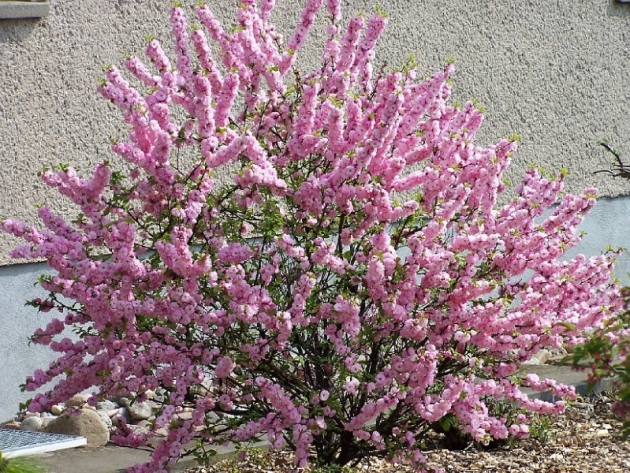
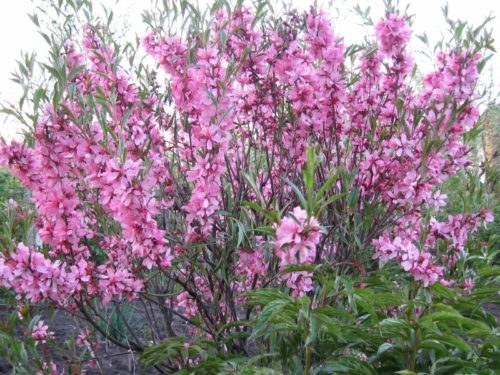
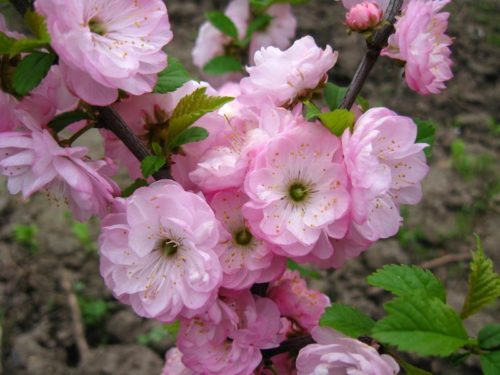
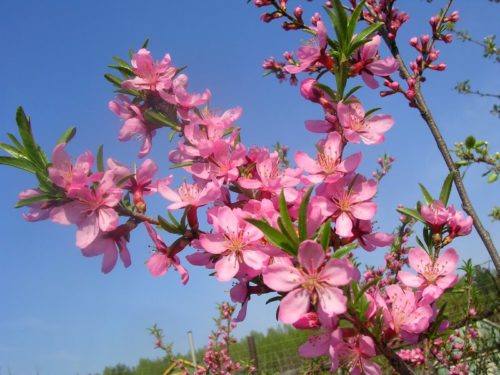
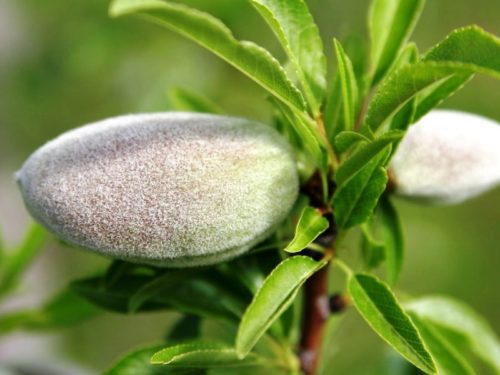
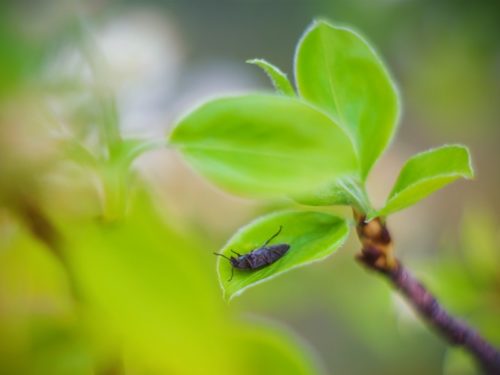

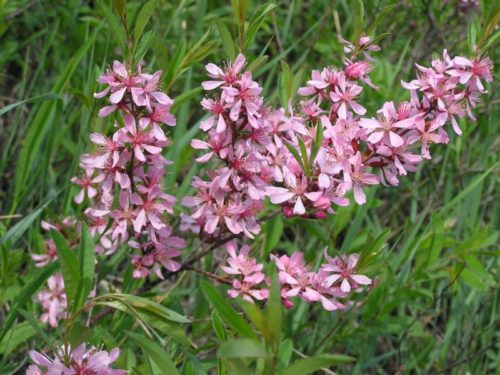














 Start a discussion ...
Start a discussion ...